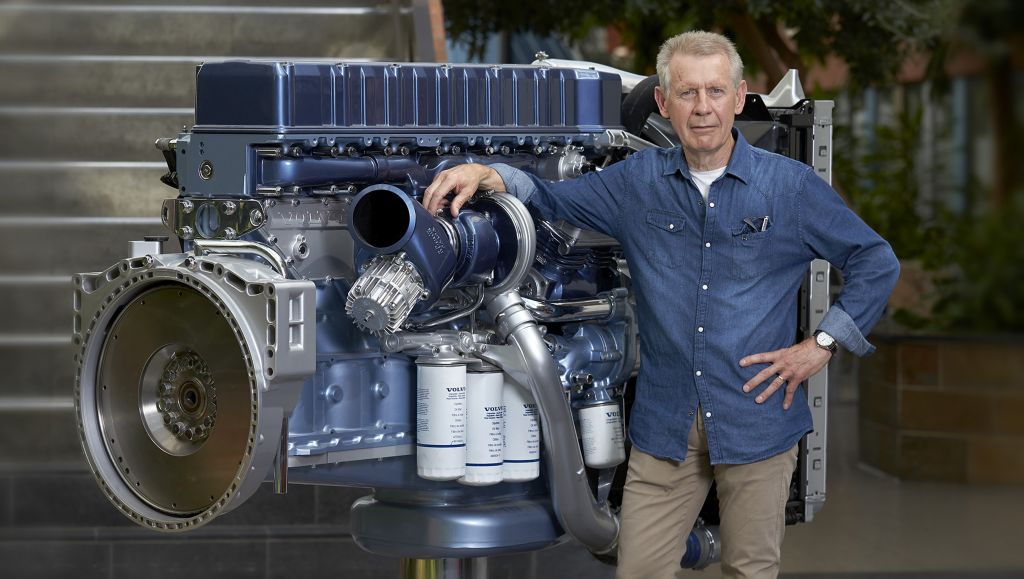The D12 engine – a paradigm shift


He remembers the press launch of the FH truck clearly. It was September 1993, and motor journalists from all over the world had gathered to be part of the revelation of the next generation of trucks. Something stood out more than anything else to the journalists, says Göran Nyholm, who played a major role in the development of the engine, together with the R & D department in Göteborg and the Skövde production site.
”The journalists were amazed by the D12 engine. Some of them said to me that we were ten years ahead of everyone in Europe. For starters, we had managed to anticipate emission standards that were not even around at that time, and we had greatly improved the quality of the cylinder head and added electronical steering and the Volvo Engine Brake, developed by us”, he says.
The assets had not been seen in Europe before, but the U.S. had some experience. In the beginning of the project for the D12, when the new features were planned in the late 80’s, the lack of European experience created some challenges, Göran Nyholm reveals.
”Especially the cylinder head, that now was to be longer, was very difficult to mold in the right way. You have to imagine, the nooks and spaces in the actual cylinder were tight. We tried and tried but couldn’t get it just right.”
But giving up was not an option. Instead, the team packed their bags and travelled to the Cummins site in the U.S, a Volvo partner. Here, both electronical steering and the new kind of cylinder head were produced.
”It turned out it could be done, and the collaboration with the Americans at Cummins was key in this process”, Göran says.
The new, longer cylinder head gave higher quality in terms of optimal gas change and combustion. With the electrical steering in addition, the features contributed to the instant success for the FH truck.
”We employed lots of new people at the site, and since we had new, more complicated features, we hired more persons with IT knowledge.”
This was my, and our, baby. I am very pleased that the truck and the engine turned out to be that great success. It was a paradigm shift in the motor industry.
From the beginning, D12 was developed especially for the FH trucks. In the late 90’s,
the engine was introduced in other product areas within Volvo, such as Volvo Penta. Also, the D12 engine has gone through changes over the decades, often as new emission regulations came out.
”Yes, the engine now has so many more features to meet the standards. Also, one should keep in mind that there are different standards in different countries. So you need to adjust that accordingly.”
Göran Nyholm retired from his job as a Volvo engineer nine years ago. Meeting him and talking about those years when the whole FH project started, is like opening a gold mine.
”This was my, and our, baby. I am very pleased that the truck and the engine turned out to be that great success. It was a paradigm shift in the motor industry”, he concludes.
Now, the journey continues, without Göran. Today 100,000 engines are produced at the Skövde site every year, whereof approximately 90% are D13 engines. What started out in the early 90’s will last for decades to come.